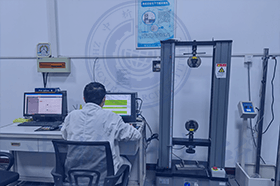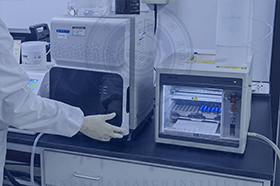檢測項目(部分)
鄰二甲苯含量
酸洗比色
甲苯含量
間二甲苯含量
總硫含量
純度
非芳烴含量
餾程
全部參數
溴指數
顏色(鉑鈷色號)
外觀
乙苯含量
檢測樣品(部分)
石油對二甲苯
檢測標準(部分)
本部分適用于現有、新建和改擴建對二甲苯生產企業取水量的管理。
本標準適用于生產對二甲苯為主要產品的企業單位產品能耗的計算、考核 以及對新建或改擴建項目的能耗控制。
本標準適用于測定純度不低于99.0%(質量分數)的石油對二甲苯,本標準對于非芳烴、苯、甲苯、乙苯、間二甲苯、鄰二甲苯、異丙苯、對二乙苯等烴類雜質的檢測限為0.001%(質量分數)。
本文件適用于食品級潤滑油中含量不低于0.1mg/kg的苯、甲苯、氯苯、對二甲苯和鄰二甲苯的測定。
This method is for determining trace hydrocarbon impurities in high purity p-xylene. The lower limit of detection for any single component is 0.002 mass %. The method can also be used for determining the total purity of the p-xylene. Mixed xylene isomers and/or diethylbenzenes in other process streams should be determined using UOP Method 744 Aromatics in Hydrocarbons by Gas Chromatography.
1.1 This test method covers the determination of known hydrocarbon impurities in and the purity of -xylene by gas chromatography (GC). It is generally meant for the analysis of -xylene of 99% or greater purity. Impurity concentrations that can be measured range from 0.001 to 1.000 weight %.
1.2 The following applies to all specified limits in this standard: for purposes of determining conformance with this standard an observed value or a calculated value shall be rounded off `to the nearest unit'' in the right-hand digit used in expressing the specification limit in accordance with the rounding-off method of Practice E29.
1.3 This standard does not purport to address all of the safety concerns if any associated with its use. It is the responsibility of the user of this standard to establish appropriate safety and health practices and determine the applicability of regulatory limitations prior to use. For a specific hazard statement see Section 8.
1.1 This specification covers xylenes for p-xylene feedstock. These xylenes typically are extracted from reformate.
1.2 The following applies to all specified limits in this specification: for purposes of determining conformance with this specification an observed value or calculated value shall be rounded off x201C;to the nearest unitx201D; in the last right hand digit used in expressing the specification limit in accordance with the rounding-off method of Practice E29.
1.3 The values stated in SI units are to be regarded as standard. The values given in parentheses are for information only.
1.4 Consult current OSHA regulations suppliers'' Material Safety Data Sheets (MSDS) and local regulations for all materials used in this specification.
1.1 This specification covers xylenes for p-xylene feedstock. These xylenes typically are extracted from reformate.
1.2 The following applies to all specified limits in this specification: for purposes of determining conformance with this specification an observed value or calculated value shall be rounded off "to the nearest unit" in the last right hand digit used in expressing the specification limit in accordance with the rounding-off method of Practice E 29.
1.3 The values stated in SI units are to be regarded as the standard. The values given in parentheses are for information only.
1.4 Consult current OSHA regulations suppliers'' Material Safety Data Sheets (MSDS) and local regulations for all materials used in this specification.
1.1 This specification covers xylenes for p-xylene feedstock. These xylenes typically are extracted from reformate.
1.2 The following applies to all specified limits in this specification: for purposes of determining conformance with this specification an observed value or calculated value shall be rounded off “to the nearest unit” in the last right hand digit used in expressing the specification limit in accordance with the rounding-off method of Practice E29.
1.3 The values stated in SI units are to be regarded as standard. The values given in parentheses are for information only.
1.4 Consult current OSHA regulations suppliers’ Safety Data Sheets (SDS) and local regulations for all materials used in this specification.
1.5 This international standard was developed in accordance with internationally recognized principles on standardization established in the Decision on Principles for the Development of International Standards Guides and Recommendations issued by the World Trade Organization Technical Barriers to Trade (TBT) Committee.
本部分適用于純度(質量分數)不低于99%、烴類雜質濃度(質量分數)范圍為0.001~1.000%的苯乙烯的測定。
注:典型的烴類雜質包括:乙苯、對二甲苯、間二甲苯、鄰二甲苯、異丙苯、正丙苯、間甲乙苯、對甲乙苯、丙烯基苯、α-甲基苯乙烯、間甲基苯乙烯、對甲基苯乙烯、苯乙炔及其他雜質。
本標準適用于含有13種可揮發性有機物的各類消費品材料,如木材、發泡材料、涂料、膠黏劑、油墨 類等。
本標橢雹用于再生水中苯、甲苯、乙苯、鄰二甲苯、間二甲苯、對二甲苯、苯乙烯及異丙苯八種苯系物含量為0.5μg/L~100μg/L范圍的測定。本標準也適用于地表水、工業用水及生活用水中苯系物含量的測定。
本標準適用于固體廢物及其浸出液中苯、甲苯、乙苯、對二甲苯、間二甲苯、異丙苯、鄰二甲苯、正丙苯和苯乙烯等9種苯系物的測定。其他苯系物若通過驗證,也可用本標準方法測定。
當固體廢物取樣量為2g時,9種目標物的方法檢出限為0.004~0.006mg/kg,測定下限為0.016~0.024mg/kg。當固體廢物浸出液取樣體積為10ml時,9種目標物的方法檢出限為0.7~2μg/L,測定下
限為2.8~8μg/L。詳見附錄A。
本標準適用于固體廢物及其浸出液中苯、甲苯、乙苯、對-二甲苯、間-二甲苯、異丙苯、鄰-二甲苯、 正丙苯和苯乙烯等9種苯系物的測定。其他苯系物若通過驗證,也可用本標準方法測定。
當固體廢物取樣量為2g時,9種目標物的方法檢出限為3~5μg/kg,測定下限為12~20μg/kg。 當固體廢物浸出液取樣體積為10ml時,9種目標物的方法檢出限為0.6~1μg/L,測定下限為2.4~4μg/L。詳見附錄A。
本標準適用于地表水、地下水、生活污水和工業廢水中苯、甲苯、乙苯、對二甲苯、間二甲苯、鄰二甲苯、異丙苯和苯乙烯8種苯系物的測定。
當取樣體積為10.0ml時,本標準測定水中苯系物的方法檢出限為2~3μg/L,測定下限為8~12μg/L。詳見附錄A。
本文件適用于甲醇制低碳烯烴水相中甲苯、乙苯、對二甲苯、間二甲苯、鄰二甲苯、1 3 5-三甲基苯、2-乙基甲苯、1 2 4-三甲基苯共8種芳香烴的測定。
本標準適用于純度不低于99.0%(質量分數)的乙苯的測定,對非芳烴、苯、甲苯、對二甲苯、間二甲苯、鄰二甲苯、異丙苯等雜質的檢測范圍為0.001%~1.000% (質量分數),對二乙苯雜質的檢測范圍為大于0.0003% (質量分數)。
本部分適用于測定純度不低于90.0%(質量分數)的石油鄰二甲苯,本部分對于非芳烴、苯、甲苯、乙苯、間二甲苯、對二甲苯、異丙苯、正丙苯、苯乙烯、三甲苯、甲乙苯、對二乙苯等烴類雜質的檢測范圍為(0.001~3.5)%(質量分數)。
本標準適用于混合二乙苯吸附分離或乙苯烷基化等工藝加工分離得到的對二乙苯,對二乙苯的主要用途是作為吸附分離對二甲苯的解吸劑。
分子結構式:C6H4(C2H5)2
相對分子質量:134.22(按2013年國際相對原子質量)

檢測資質(部分)










檢測優勢
檢測實驗室(部分)





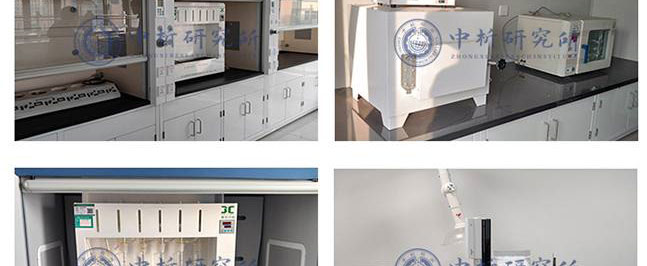
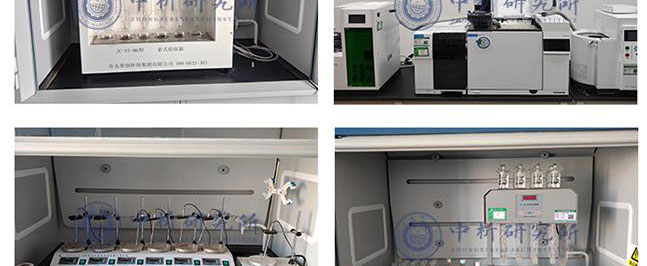
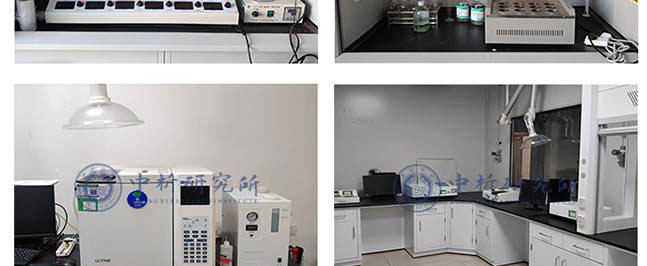
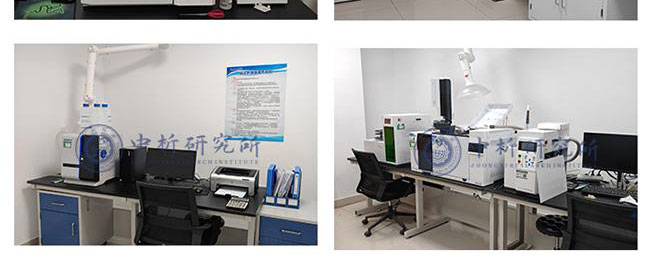
合作客戶(部分)





檢測報告作用
1、可以幫助生產商識別產品的潛在問題或缺陷,并及時改進生產工藝,保障產品的品質和安全性。
2、可以為生產商提供科學的數據,證明其產品符合國際、國家和地區相關標準和規定,從而增強產品的市場競爭力。
3、可以評估產品的質量和安全性,確保產品能夠達到預期效果,同時減少潛在的健康和安全風險。
4、可以幫助生產商構建品牌形象,提高品牌信譽度,并促進產品的銷售和市場推廣。
5、可以確定性能和特性以及元素,例如力學性能、化學性質、物理性能、熱學性能等,從而為產品設計、制造和使用提供參考。
6、可以評估產品是否含有有毒有害成分,以及是否符合環保要求,從而保障產品的安全性。
檢測流程
1、中析研究所接受客戶委托,為客戶提供檢測服務
2、客戶可選擇寄送樣品或由我們的工程師進行采樣,以確保樣品的準確性和可靠性。
3、我們的工程師會對樣品進行初步評估,并提供報價,以便客戶了解檢測成本。
4、雙方將就檢測項目進行詳細溝通,并簽署保密協議,以保證客戶信息的保密性。在此基礎上,我們將進行測試試驗.
5、在檢測過程中,我們將與客戶進行密切溝通,以便隨時調整測試方案,確保測試進度。
6、試驗測試通常在7-15個工作日內完成,具體時間根據樣品的類型和數量而定。
7、出具檢測樣品報告,以便客戶了解測試結果和檢測數據,為客戶提供有力的支持和幫助。
以上為對二甲苯檢測的檢測內容,如需更多內容以及服務請聯系在線工程師。






